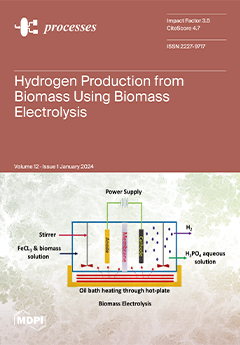Four types of non-dairy (plant) drinks—almond, oat, rice, and soy—as well as cow milk with varying fat contents (1.5%, 2.0%, and 3.2%), were examined and compared in terms of the total concentrations of Al, As, B, Ba, Ca, Cd, Cr, Cu, Fe, K,
[...] Read more.
Four types of non-dairy (plant) drinks—almond, oat, rice, and soy—as well as cow milk with varying fat contents (1.5%, 2.0%, and 3.2%), were examined and compared in terms of the total concentrations of Al, As, B, Ba, Ca, Cd, Cr, Cu, Fe, K, Mg, Na, Mn, Ni, P, Pb, Sb, Se, Sr, and Zn using inductively coupled optical emission spectrometry (ICP OES). Additionally, in vitro gastrointestinal digestion was used to determine the bio-accessible fraction of selected elements, evaluating the nutritional value and risk assessment involved with the consumption of these beverages. A significant difference in the mineral profile was observed depending on the type of plant drink, with the highest content of elements noted in the soy drink and the lowest in the rice drink. Except for Ca and P, the soy drink appears to be a much better source of essential nutrients, including Cu, Fe, and Mn, than cow’s milk. A similar Ca content in plant beverages can be obtained only by adding calcium salt at the stage of its production. Interestingly, by using the multivariate data analysis, the average content of the selected elements (Cu, K, Na, P, and Zn) can be used both to differentiate dairy and non-dairy milk samples according to their type and to distinguish plant drinks from milk of animal origin. The bio-accessibility of essential elements (Ca, Cu, Fe, Mg, Mn, P, Zn) in cow milk was within 8.37–98.2% and increased with an increase in its fat content. Accordingly, by drinking 1 L of this milk daily, it is possible to contribute to the recommended dietary intakes of Ca, P, Cu, Mg, and Zn between 5.6–68%. Although the bio-accessibility of elements in the rice drink was the highest (9.0–90.8%), the soy drink seems to be the best source of nutrients in bioavailable forms; its consumption (1 L/day) covers the requirements of Cu, Mn, Mg, Ca, P, and Zn in 7.0–67%. Unfortunately, both groups of beverages are not important sources of Fe (plant drink) and Mn or Fe (cow milk) in the human diet. On the other hand, potentially toxic elements (Al, B, Ba) were found in them in a relatively inert form.
Full article





